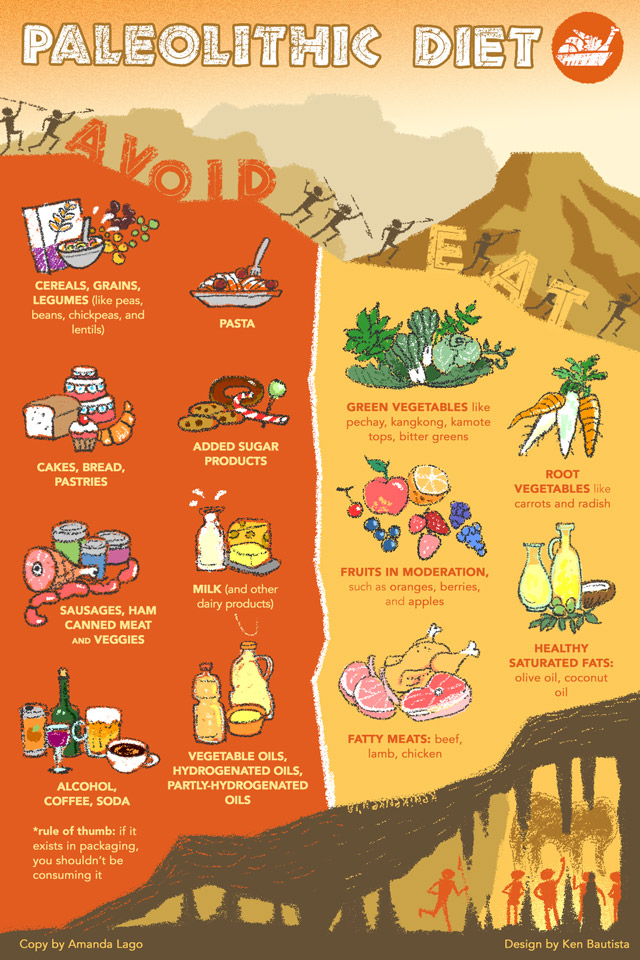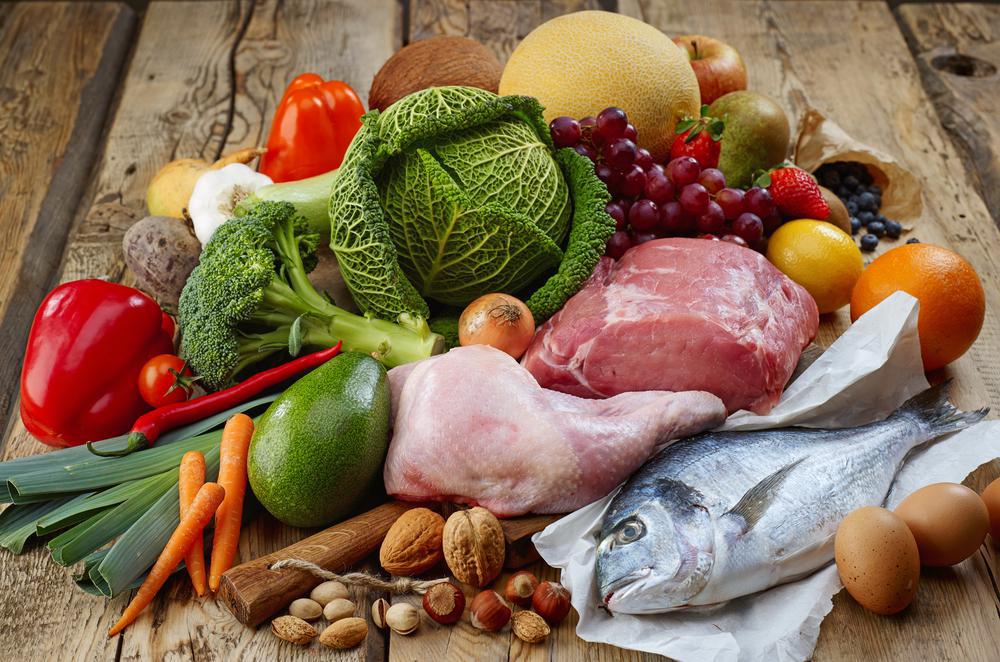
You may be curious about what you can eat on the Paleo diet. Here's a guideline of what you should eat on this diet. You'll also find a meal plan to help you stick to your diet for seven days. Keep a food diary! Keep a journal so you can track your intake and track any changes over time. Next, exercise to relieve stress.
Paleo-friendly food options
Paleo is a way to avoid processed foods and sugar. These can have harmful effects on your health, especially if you have a damaged gut or are allergic to gluten or milk. Also, avoid trans fats such as margarine made from vegetable oils. Artificial sweeteners should be avoided.
Make sure you have a shopping list with paleo-friendly items if your plan is to follow the paleo diet. You'll have a plan to follow and can adjust as needed. In the first week, it is important to avoid foods high on fat and carbs. As snacks, you can eat more fruits or vegetables. However, it is not a good idea to skip meals. Talk to a registered dietitian if you have difficulty sticking to your diet plan.
Meal plan for a 7-day paleo diet

To follow the program, a meal plan for seven days paleo is necessary. Here is a sample menu that includes eggs, salads and olive oil as well as nuts, meats, avocados, salsa and vegetables. This plan does not include any foods that are not considered "paleo" or "primal." There are some exceptions to these guidelines, like avoiding food that is processed in factories.
Although eating like a caveman may lead to weight loss and healthier living, you need to be aware that there is no right or wrong way to eat the paleo diet. It is possible to be successful, but it is important that you understand the basics of the diet. Paleo allows you to have a variety or legumes and dairy. Some Paleo diets also allow beans and certain grains. Be sure to choose a diet you can stick with without too many complications.
Sweet potato haveh, which is served alongside eggs, is an excellent healthy alternative to white potato. This meal is loaded with nutrients, and is a balanced breakfast. Sweet potatoes are low in glycemic, and they provide beta-carotene which is converted into vitamin A by the body. Sweet potatoes are good sources of energy. You get an energy boost. And since sweet potatoes are lower on the glycemic index, they will improve your memory and focus.
While on a paleo diet, keep a food log
In the initial weeks of your diet, it's important that you measure all foods accurately. You might consider buying a scale for your food journal if this is the first time you have done it. A Target food scale, however, is a good option. You can eventually eyeball portions. To be precise, a 3-ounce serving of protein will roughly equal a deck of cards. The size of a ping-pong ball is also roughly equivalent to a two tablespoon scoop of nut Butter. Other food items such as chicken should be noted exactly how much you have and not a general number.

A person's individual preferences will dictate the benefits and drawbacks of a paleo diet. People who are addicted to carbs will find it difficult. The diet is highly recommended for meat lovers. Assessing your food intake is the most important thing to do when deciding if a paleo diet will work for you. You might find you don’t need to eliminate all grains and dairy products. Or you may find you only need one of them.
Paleo diet results in weight loss
Paleolithic eating may lead to weight loss but it's not an easy way to get there. It's important to stick to the diet, exercise regularly, and take in enough nutrients and calcium. Since this diet consists mostly of whole, unprocessed foods, you should avoid grains and dairy products. However, foods such salmon and spinach can provide calcium. Discuss your specific needs with a registered dietitian.
There are some side effects to the Paleo diet, including constipation and flu-like symptoms. The main reason is that it causes the body to convert fat into ketone bodies, which are then used by the cells as energy. This leads to constipation, nausea and bad breath. Also, the low-carb diet may affect your sleep and digestion. Paleo is known for its negative side effects, including constipation, nausea and bad breath.
FAQ
How can I learn more about cooking?
There are numerous cooking classes offered across the country. Many schools offer courses in baking, pastry, and wine tasting. You can take a class at your local vocational school or community college if you are interested in learning more about cooking.
What are the benefits of using a slow cooker?
Slow cookers are extremely useful as they make it easy to cook delicious meals in a short time. Slow Cooker Recipes are often healthier than traditional recipes because they require less oil and fat. Slow cooker recipes are also convenient as they can take care of themselves while your sleep.
Do I have to go to culinary school in order to be a professional chef?
No. No. Many chefs began their careers learning by themselves. Some even went on to culinary school to gain work experience. However, most chefs prefer to attend culinary school because it gives them more opportunities to learn and grow professionally. Culinary schools offer students hands-on training, which helps them build valuable skills and improve their cooking knowledge.
How do I get hired to cook?
Word of mouth can help you get a job as an experienced cook. People in your circle of friends might know about restaurants that need additional staff. Restaurants often post openings on websites and bulletin boards.
Statistics
- You'll be amazed that over 90% of CIA students receive scholarships and grants to finish their culinary studies. (ischoolconnect.com)
- According to the BLS, chefs earn $58,740 a year. (learnhowtobecome.org)
- The median pay for a chef or head cook is $53,380 per year or $25.66/hour, according to the U.S. Bureau of Labor Statistics (BLS). (learnhowtobecome.org)
External Links
How To
How to make a perfect eggroll
Omelets are a favorite breakfast food of mine. But how do they turn out so perfectly? Many different recipes and methods have failed to work for me. I have some tips and tricks to help you make delicious, fluffy omelets every single morning.
We should first know that eggs are very temperamental ingredients when making omelets. It is important that eggs are fresh from an organic market and kept cool until used. They must be kept cool, otherwise the whites will not form properly and the yolks may become runny. This can make your omelets look bizarrely colored. If you intend to cook your eggs immediately, it's best to use room-temperature egg.
Another tip is to separate the egg before adding it to the pan. It is important not to allow any white to mix with the yolk as this could lead to the omelet becoming curdled.
You might burn the bottom of the egg if you place the egg directly on the stovetop. This could ruin the texture of your omelet. Instead, microwave the egg for 10 seconds before adding it to the pan. The heat from the microwave cooks the egg just enough without overcooking it.
Next, let’s talk about mixing the egg. When you mix eggs together, you want to beat them well. Turn the bowl upside down and grab the whisk to do this. Next, shake the bowl vigorously. This way, the air inside the bowl gets whipped around and mixes the egg thoroughly.
The fun part is now - adding the milk to the mixture. First, pour half of the milk into the beaten eggs and then fold the eggs gently into the remaining milk. Don't worry if there are still streaks of egg visible; these streaks will disappear once you flip the omelet.
After you have folded the eggs, heat the oil in a pan over medium heat. Once the oil has started to sizzle, turn the heat down to low. Add 1/4 cup butter to the oil and swirl it around to coat all sides of the pan. Next, carefully open the lid and sprinkle salt into your pan. Salt will prevent the omelet sticking to the pan.
Cover the pan once the omelet is formed and allow it to cool completely. Flip the omelet by using a spatula. Cook the opposite side for another minute. Take the omelet out of the pan and immediately serve.
This recipe is best when used with whole milk. But, you can use skimmed milk as well.